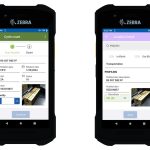In line with the fast growing direct to consumer (D2C) market, which is set to be worth some $175bn in the US alone by 2023, WMS technology innovator SnapFulfil has taken its pioneering remote implementation (RI) initiative to the next level with an advanced version that enables customers to onboard the solution themselves.
A tailored ‘Self Implementation’ programme provides step-by-step and hands-on guidance in project management and execution, to provide clients old and new with greater control, more independence and internal system expertise.
The new documentation factors in key steps, decisions and milestones to be completed throughout the project and covers everything from data gathering, configuring the technical infrastructure, user preparation and verification to data migration, stock take and validation, plus go live support.
SnapFulfil’s Chief Product & Delivery Officer, Smitha Raphael, said: “Today’s businesses need to be nimble and quick to respond to changing market demands. Over the past two years, in particular, we have seen many more customers adopt a D2C model that requires agile and easily configurable WMS solutions.
“We’re all about speed-to-value partnerships and being able to scale with our customers and be extremely flexible to meet all of the demands of their business. This self-sustainable implementation option (with our support as required) can facilitate quicker and slicker multi-site onboarding, once we’ve instructed them in the first one or two.
“The initial ability to digitally implement our WMS solution, whilst producing the same positive results in adoption and use as traditional on-site engagement, was essential to overcome the challenges of the global pandemic. Moving forward, self-implementation means customers have all the technical essentials in place for a seamless self-rollout across their DC estate.”
Apart from the initial site set up, warehouse creation and user licensing that SnapFulfil always has to prepare first, self-implementation typically begins with internal operations and IT personnel designing work processes that the SnapFulfil team then fine tune.
This could include all facets of a D2C enterprise, such as receipts, transfer orders, customer returns, putaway and racking, cross-docking, vendor returns, order release and allocation, load creation, picking, plus inventory counting and stock audits.
Clients then allocate dedicated staff members to the new warehouse for input on tailored training documents via web conferencing, end-to-end integration testing, plus critical parts of the go-live timeline – and ultimately take control of the rules configuration, device training and copying the test into the live system in preparation for launch.
The post Continuous WMS improvement with self-implementation appeared first on Logistics Business® Magazine.

